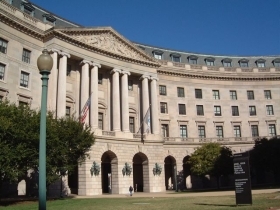On Eve of New Climate Regs, A Primer on Federal Greenhouse Gas Regimes: Part I

For 2 years industry officials, states, and environmentalists have had 2 January 2011 circled on their calendars. That's the date greenhouse gases officially become regulated pollutants under the Clean Air Act—a direct result of a 2007 ruling by the U.S. Supreme Court that carbon dioxide is a pollutant under that law. The Environmental Protection Agency's effort to control greenhouse emissions will only get more controversial as myriad lawsuits challenge the regime and Republicans, now ascendant in the House of Representatives, seek to stop EPA in its tracks.
Two things begin on Sunday, for the two main regulated sources of greenhouse gas pollution. One involves cars and light trucks, which are responsible for about one-fifth of U.S. heat-trapping emissions. The rules apply to 2012 model vehicles, which can be sold starting Sunday. They must now follow toughened CAFE fuel efficiency standards laid out in May. With industry on board—though there's some grumbling—these steps are relatively uncontroversial.
The more divisive efforts are for regulating power plants, refineries, and big factories which emit greenhouse gases. Starting Sunday, new facilities require a permit if they are expected to emit 75,000 tons of CO2 (or equivalent greenhouse gas) a year or if they are already running but plan to add that much new capacity. In July existing plants that emit 100,000 or more tons will need a permit.
State regulators, with oversight from EPA, serve to enforce the Clean Air Act for all polluters within their borders. In November, EPA released draft "guidance" for states in setting up their regulations for stationary big emitters. The guidance includes a mix of three strategies to cut pollution: using technology to make plants more efficient, switching to more efficient sources of energy (in most cases, from coal to natural gas), or capturing greenhouse gas emissions and storing them underground. (For coal plants, it's dubbed "Carbon Capture and Storage.")
In general, EPA requires states to describe how they intend to regulate air pollution. For greenhouse gases, all but eight states have submitted such an implementation plan. Seven say they need more time (some states have until December 2011), while Texas officials say they will not cooperate. One set of draft rules released last week provides a way for the federal government to step in and regulate plants in the meantime.
The other set of rules released govern the program for states that are on board with the new regime. These include a framework for the two main kinds of Clean Air Act permits that facilities need. Those are operating permits, known as "Title V permits," and permits to modify or build new plants, called "Prevention of Significant Deterioration" permits. Final rules for each are due by May 2012 for power plants and by November 2012 for oil refineries.
But those dates could change—or the deadlines extended indefinitely if Congress decides to intervene. Legal efforts, which ScienceInsider will tackle tomorrow, could also throw a monkey wrench in the works.
*This item has been corrected, 11:50 a.m. on 30 December. The threshold pollution level to trigger regulation for new plants was stated as 75,000. It is 100,000.
© 2010 American Association for the Advancement of Science. All Rights Reserved.